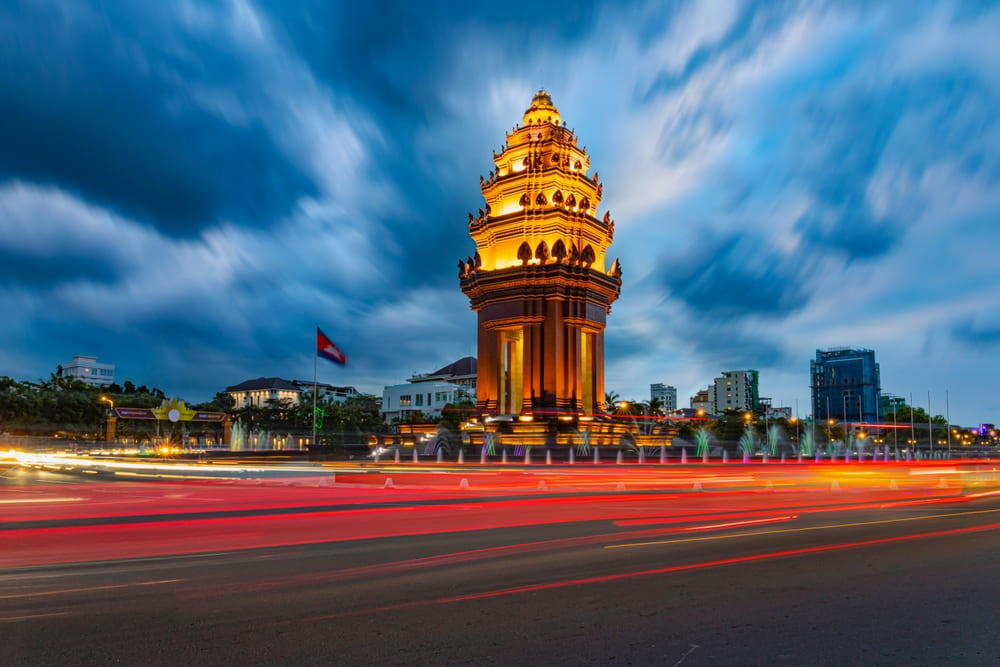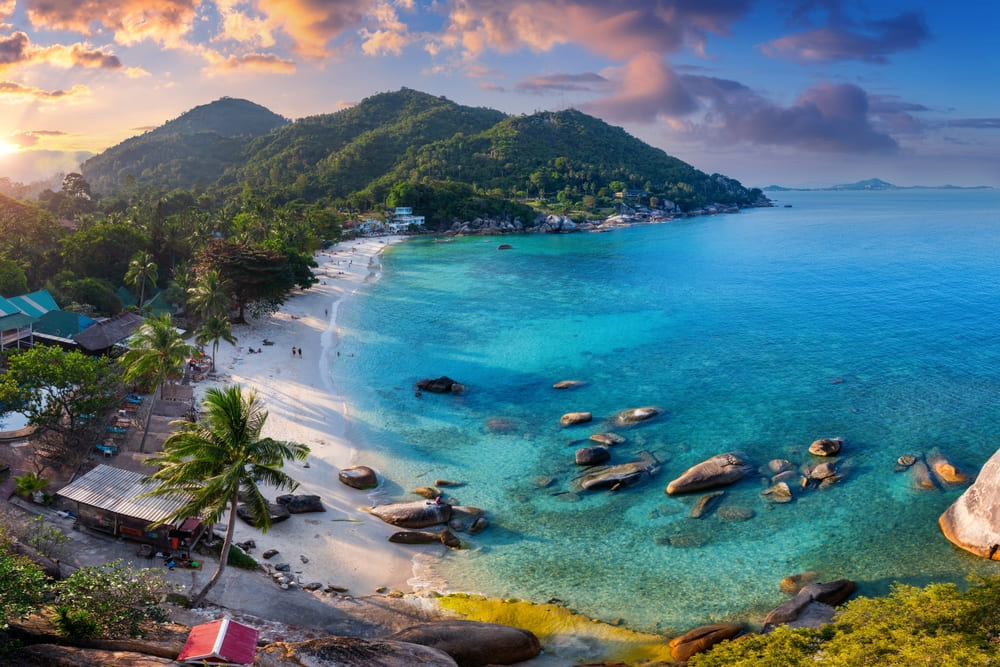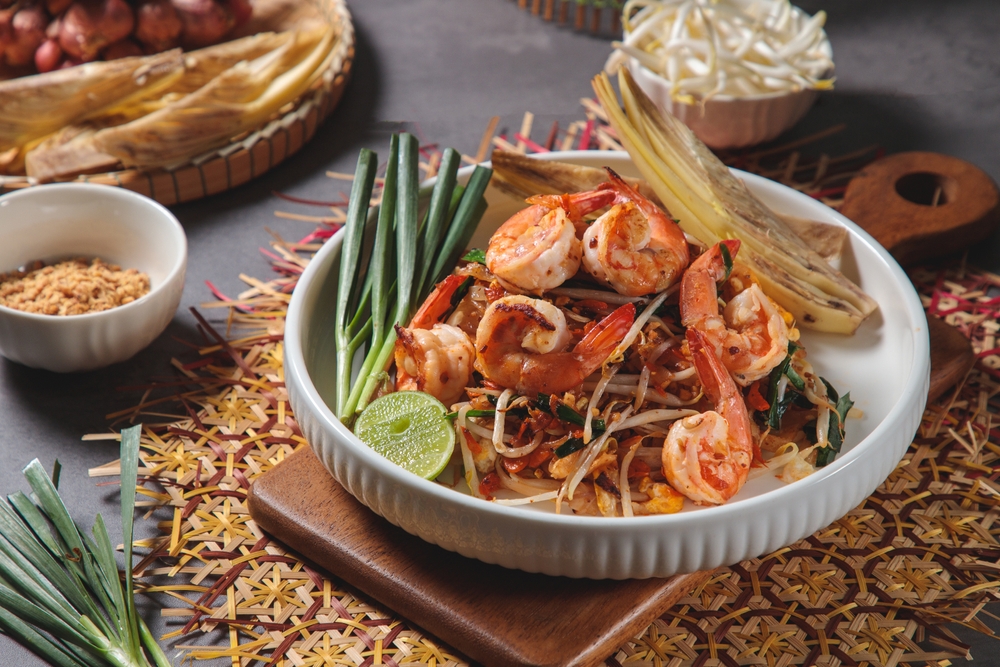Bangkok Airways Round-Up
- The capital city of Cambodia, Phnom Penh, is located in the southern-central region of the nation. It is located at the point where three rivers meet, including the Bassac, Tonle Sab, and Mekong rivers. Founded in 1434, Phnom Penh carries an abundant history of significant past events to current peace.
- Phnom Penh is one of the travelerstop destinations in Southeast Asia. It is the biggest and wealthiest city in the country and offers many different attractions, such as the Royal Palace, the Independence Monument, Mekong Island, and temples.
Phnom Penh offers a wide range of historical and contemporary attractions, making it an ideal destination for many. Experience the rich culture and history in this blooming city. If you are planning your next trip to Phnom Penh, Bangkok Airways has got you covered! In this complete travel guide to Phnom Penh, you will find various attractions and activities you must try in the capital city of Cambodia.
The History of Phnom Penh
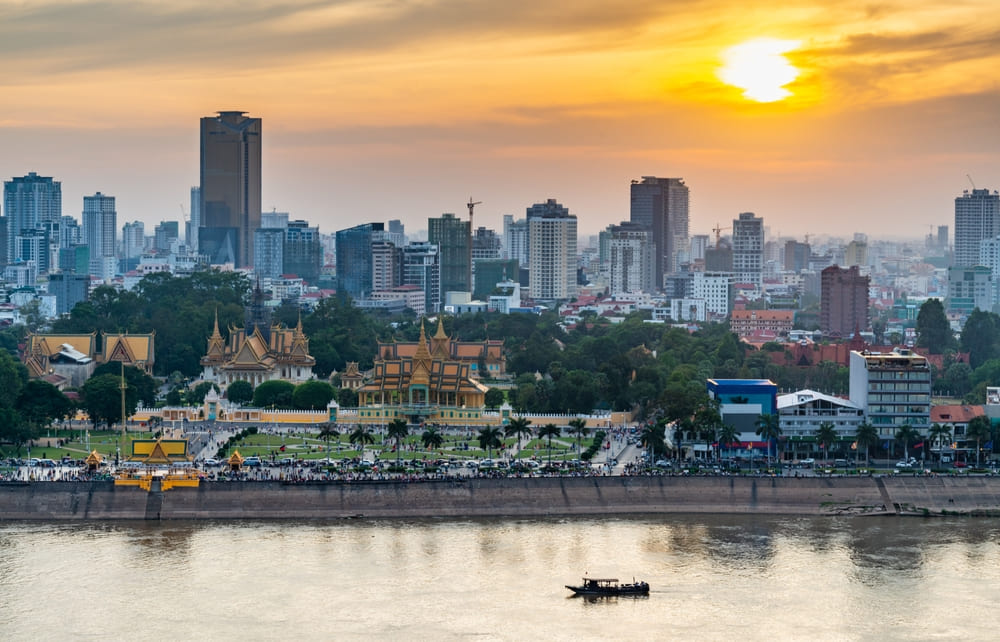
Cambodia is a country located in Southeast Asia where incredible and significant historical events happened over the course of centuries. Phnom Penh, the capital city of Cambodia, sits in the prime location on the coasts of the Mekong River, Tonle Sap River, and Bassac River. As a hub of economy, culture, and education, this city carries a monumental history that bridges Cambodia’s past and present.
Phnom Penh was once a capital city in the 15th century under the monarchy system, but it was then abandoned in the next century. During the French colonial era, the city was established as a capital city again in 1866. European architecture developed and influenced Phnom Penh. Despite the devastating Khmer Rouge period, the city has remarkably recovered and progressed at an impressive pace.
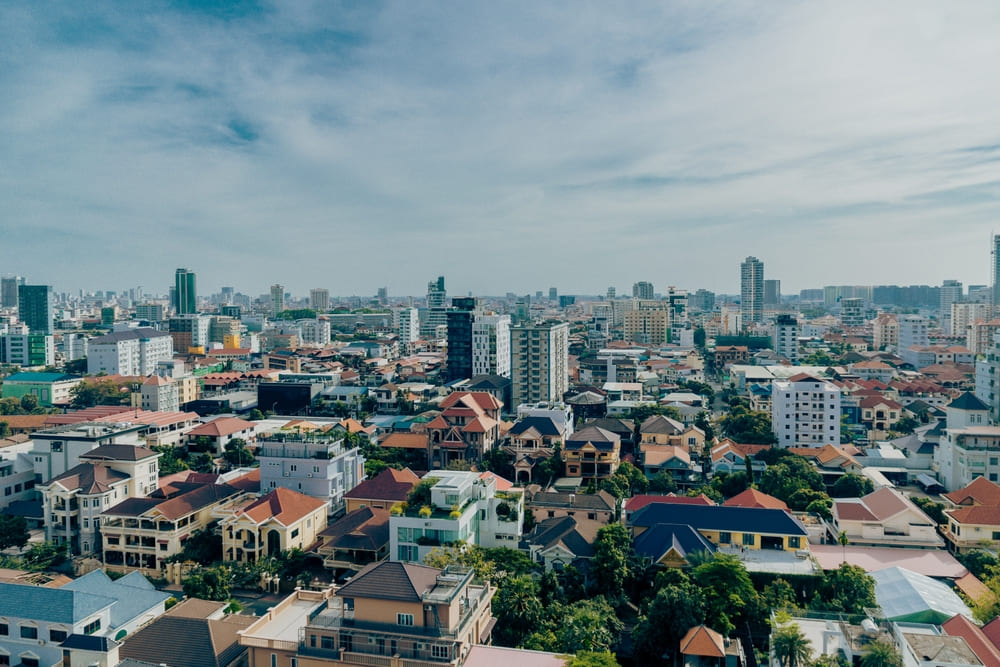
With its rich history, you will notice the influences of various cultures throughout the capital city, including Southeast Asia, France, and the United States. In the present, Phnom Penh continues to advance and grow as the capital city, presenting a mix of the traditional and the modern world. This vibrant metropolis has experienced a significant development surge in recent years with a skyline of tall buildings while still preserving its historical sites.
It’s time to pack your bags and get ready to explore Phnom Penh, Cambodia! With Bangkok Airways, you can enjoy direct flights straight to the capital city of Cambodia. Here’s the ultimate guide to 15 things to do in Phnom Penh.
Explore the Heart of Cambodia: 15 Things to Do in Phnom Penh
1. Discover the Serenity of Royal Palace and Silver Pagoda
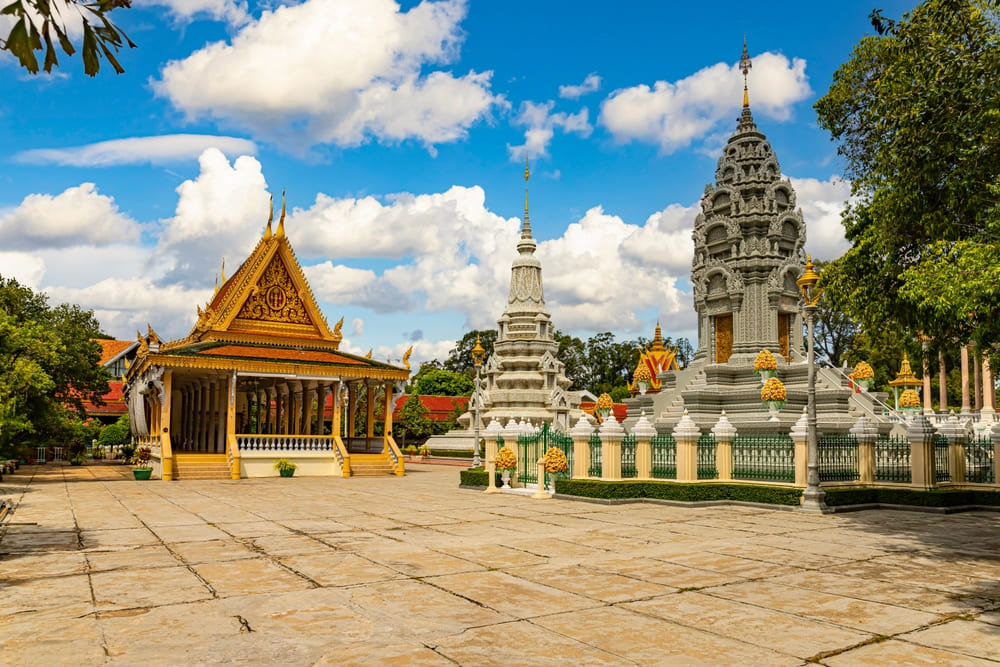
Walk through the Royal Palace that covers an extensive area of 174,870 square meters featuring elegant architecture and flourishing gardens! Since 1860, the Royal Palace has served as the residence of the King of Cambodia. Although half of the palace is restricted and reserved for the king’s private use, visitors are still allowed to visit and explore a significant part of the stunning palace, such as the Throne Hall, the Emerald Buddha, and the Maitreya Buddha. Head south from the Throne Hall, and you will find the iron villa of Napoleon III, which was given by Napoleon III of France.
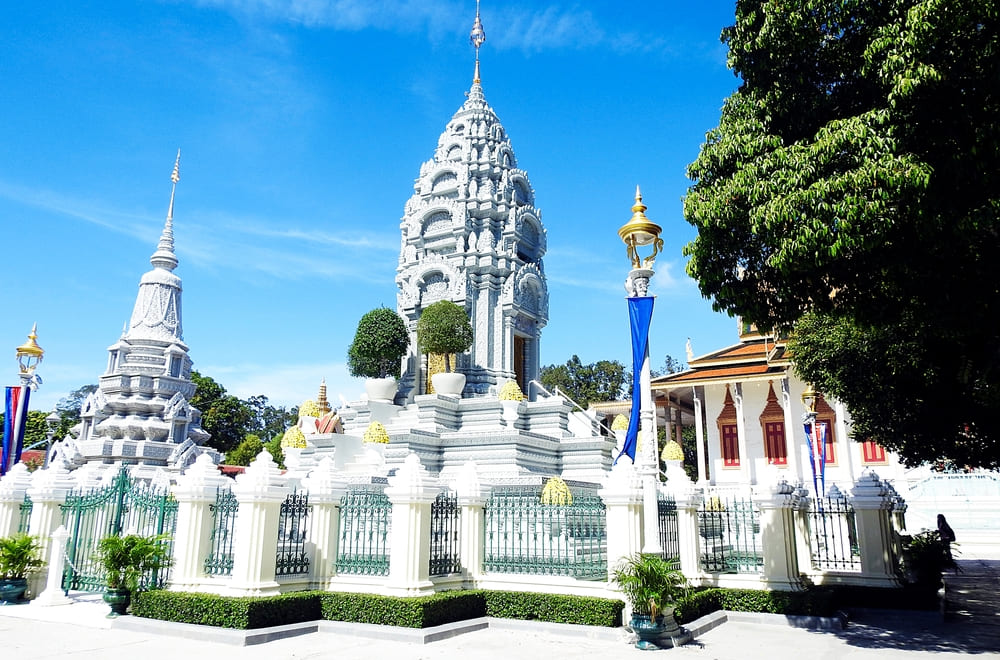
Continue your exploration just a short walk from the Emerald Buddha and check out the gleaming Silver Pagoda. Originally built with wood in 1866, King Norodom later had it rebuilt and covered with 5 tons of silver, resulting in the name of Silver Pagoda.
Inside the Silver Pagoda, admire the emerald Buddha statues from the 17th century that were made of Baccarat Crystal. The pagoda is also home to a life-sized gold Maitreya Buddha statue made in 1906. This magnificent Buddha statue weighs 90 kilograms, crafted from gold with sparkling 9,584 diamonds all around.
Opening hours: Daily, 9:00 am – 5:00 pm
2. Appreciate Khmer Art At National Museum of Cambodia
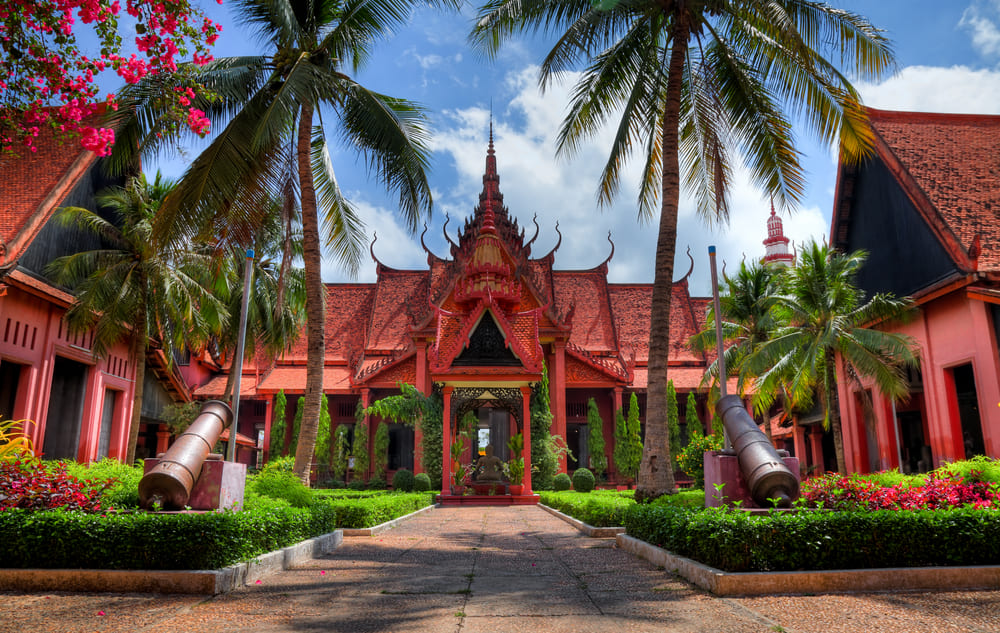
Dive into the world of Khmer art at the National Museum of Cambodia, featuring the world’s biggest collection of Khmer artwork and sculpture with approximately 2,000 works. Throughout its four art galleries, you will find a variety of Khmer sculptures, artifacts, many types of pottery, and bronzes dating from historical periods in the 4th to 14th centuries.
Built in the early years of the French colonial era, this museum features a blend of French and Cambodian styles. You will notice the graceful curved doors and windows, decorations of Nagas on top of the roofs, and a charming inner courtyard full of fish and flowers. The National Museum showcases its exquisite terracotta design, covered in red sandstone, boasting its traditional architectural style.
Opening hours: Daily, 8:00 am to 5:00 pm
3. Enjoy a Live Performance of Cambodian Living Arts – Apsara and Traditional Khmer Dance
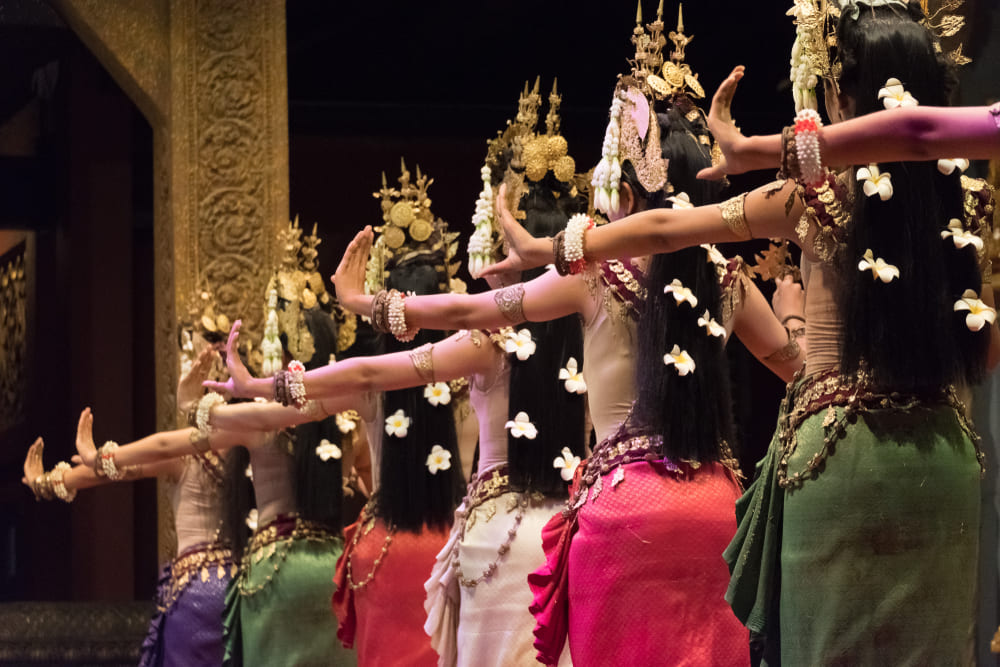
Immerse yourself in Cambodian culture through the living arts, where a variety of dance and performances showcase Cambodian traditional performing arts. Experience captivating art forms such as folk and classical dance, village rituals, and Apsara and traditional dance.
Enjoy a live performance of the Cambodian Apsara dance that is attractive to all visitors around the world. The dancers represent Cambodia’sliving heritage and identity through performance art—an entertaining alternative to get to know Cambodia.
Opening hours: Monday to Friday, 8:00 am – 5:30 pm
4. Go On Shopping Spree At Central Market (Phsar Thmey)
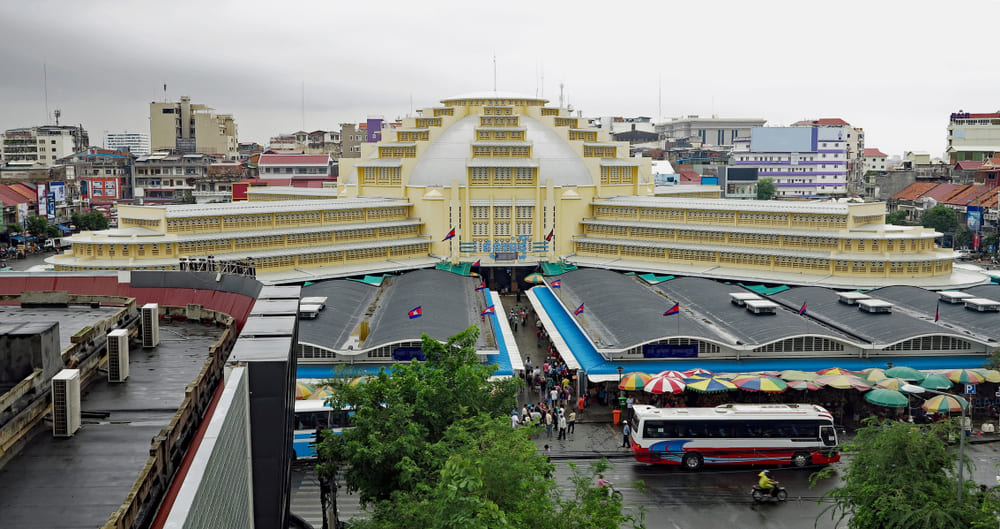
Experience local lifeand join the bustling crowd at the Central Market, locally known as “Phsar Thmey,” a must-visit for any shopping enthusiast in Phnom Penh. Translating to “new market,” it was built during the French colonial period in 1937. Designed by Desbois, this iconic art deco building was renovated to preserve the structure in 2011.
Browse through a wide range of local goods and discover an array of value-for-money items, including fresh produce, household essentials to second-hand clothing and even silverwork. Experience the true Cambodian way of life at the Central Market.
Opening hours: Daily, 7:00 am – 6:00 pm
5. Visit The Symbol of Freedom At Independence Monument
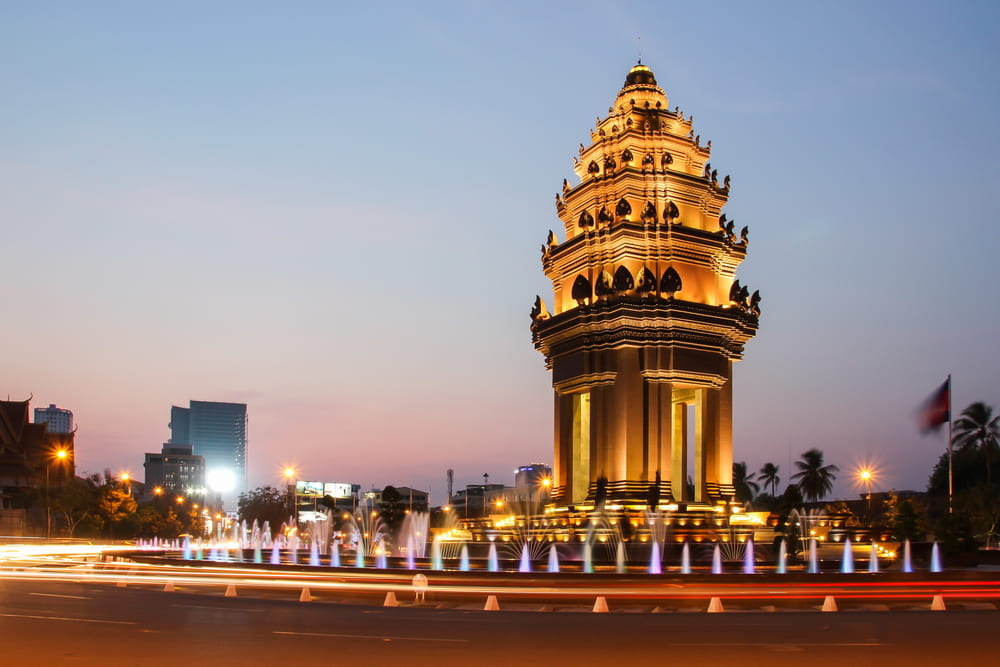
One of the landmarks that you can’t miss in Phnom Penh is the Independence Monument. Built between 1958 and 1962, this monument commemorates Cambodia’s independence from France in 1953.
Designed by well-known Cambodian architect Vann Molyvann, the Independence Monument features a distinct Khmer style. Its blend of modern and traditional elements was inspired by lotus flowers and temples of Angkor. Standing 20 meters tall, the monument was built with red bricks and decorated with Naga heads on each tier of lotus petals.
Situated at the junction of Norodom and Sihanouk boulevards, the Independence Monument stands prominently for you to enjoy the view all around. The best time to visit is late afternoons, when the warm light casts beautiful shadows. After sunset, the monument is illuminated with majestic blue, red, and white lights, reflecting on the fountains representing the colors of the Cambodian flag.
6. Hike Up The Mountain to Wat Phnom
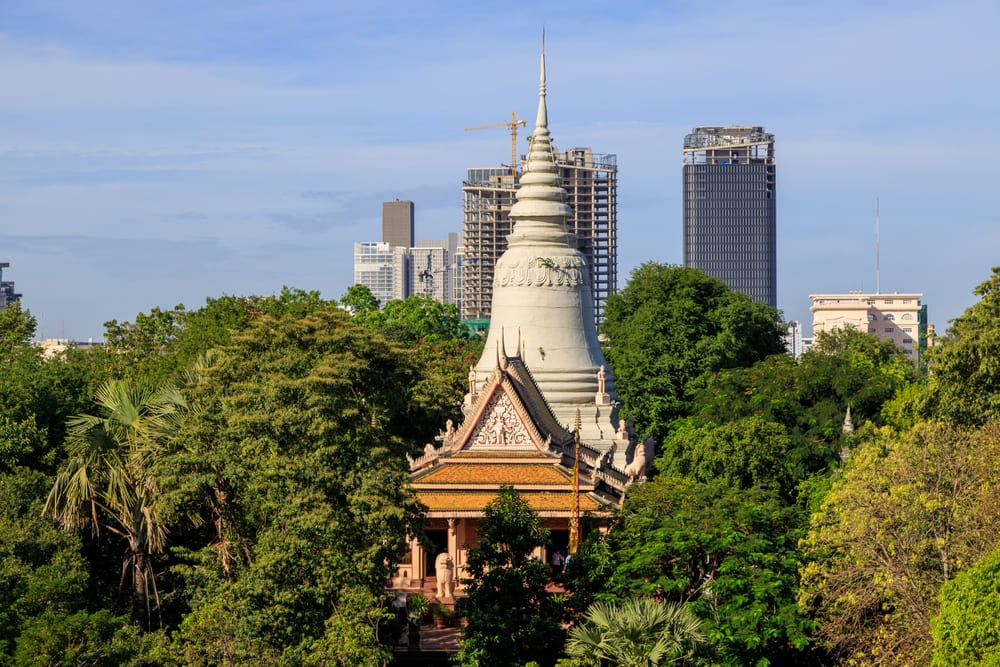
Challenge yourself with a hike up the 27-meter-high hill to Wat Phnom, which translates to “Mountain Pagoda,”. The stairway is lined with sculptures of lions and Nagas along the way, representing the temple’s protectors.
Built in 1373, Wat Phnom was originally used to house statues of Buddha and historic murals depicting the story of Ramayana on its wall. Over time, it has become a sacred place where people come to pray and make wishes for their lives.
Just outside of the stupa, there is a small shrine dedicated to a lady named “Penh,” who was believed to discover the statues of Buddha by the Mekong River. The shrine was built to protect the divine statues, and people often come to bring offerings and pray for good luck.
Traveling here is easy as it is located near other main attractions in Phnom Penh such as the Royal Palace and National Museum. Remember to wear attire that covers your knees and shoulders to enter the temple respectfully.
Opening hours: Daily, 7:00 am – 6:00 pm
7. Take a Relaxing Stroll Along The Sisowath Quay
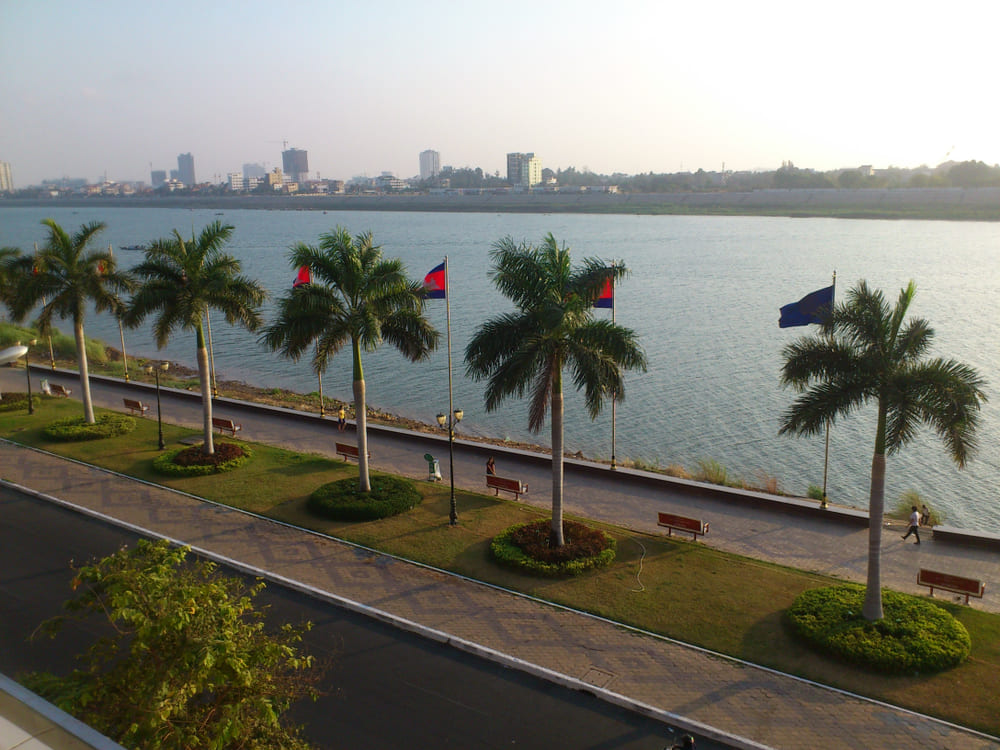
Go for a walk at Sisowath Quay or the Riverside, a 3-kilometer-long strip of boulevard that runs along the east side of the Tonle Sap River in Phnom Penh. Sisowath Quay is one of the most popular tourist attractions, as it is a hub of bars, cafes, restaurants, boutique stores, and luxury hotels along the boulevard.
Conveniently located near several iconic Phnom Penh’s landmarks such as the Royal Palace and the National Museum of Cambodia, Sisowath Quay is an ideal spot to relax. Don’t miss trying out diverse culinary options, from Cambodian flavors to international cuisines. If you visit in the afternoon, stick around to enjoy a panoramic sunset view right next to the Tonle Sap River.
8. Go On a Short Trip To Mekong Island (Koh Dach)
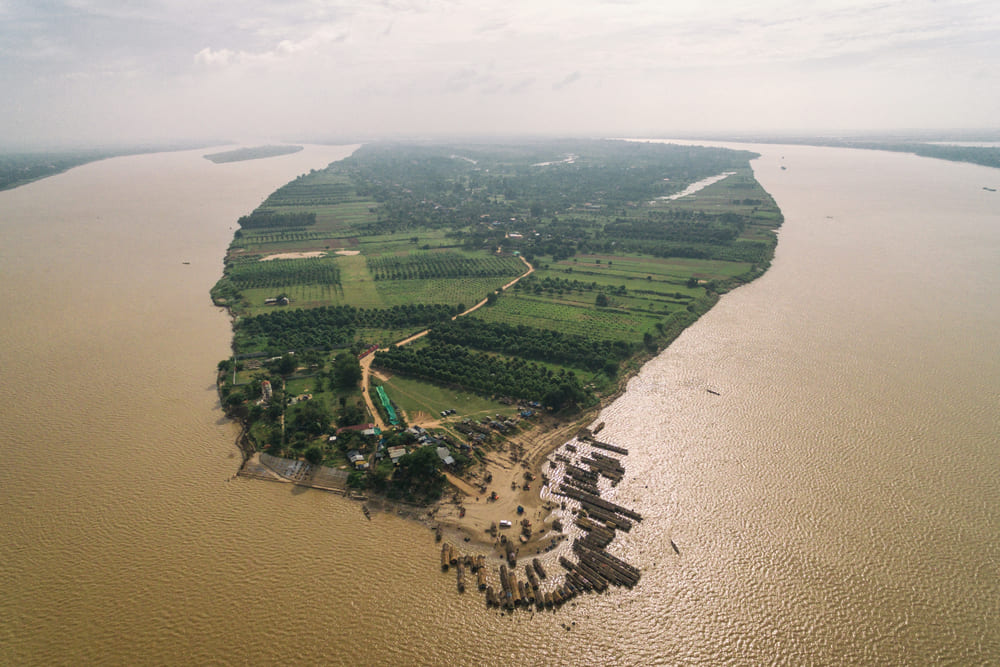
Take a short day trip to experience a charming, small-town vibe just about 20 kilometres away from downtown Phnom Penh or 1-hour drive including a short ferry ride. Koh Dach, also known as Silk Island, is an island in the middle of the Mekong River—a perfect destination that you can’t miss in Phnom Penh.
True to its name, Silk Island is one of the few places where you can see silk production,from cultivating silk to dyeing and weaving by the locals. Another popular activityon the island is cycling along the scenic path and enjoying the stunning rural landscapes of the rice fields, Khmer-stilted houses, and local animals.
Opening hours: Daily, 7:00 am – 7:00 pm
9. Observe The Local Way of Living At Oudongk
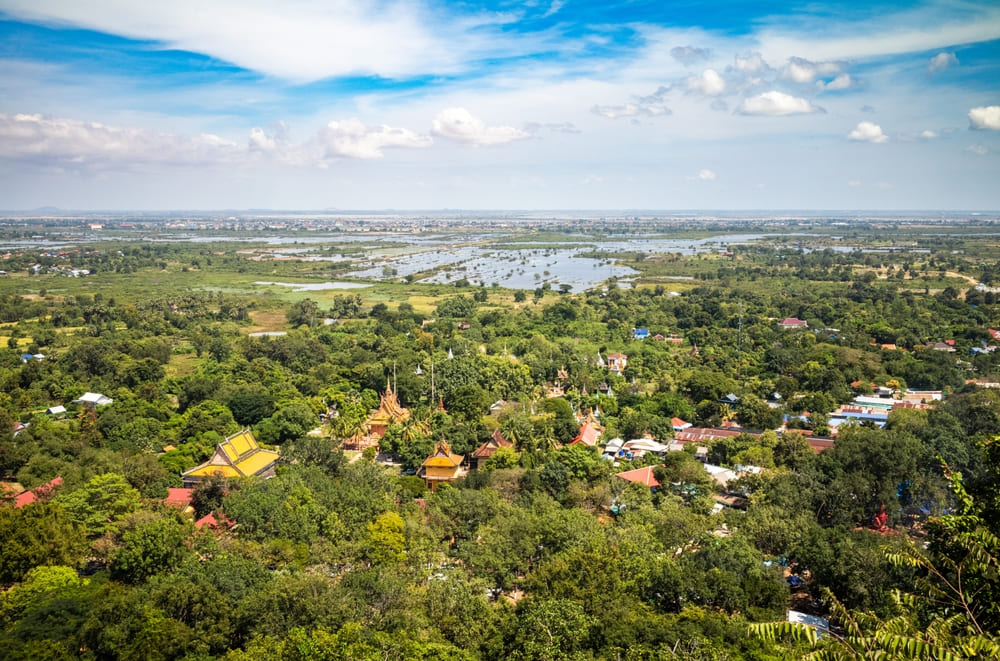
From the early 17th century to the mid-19th century, Oudongk was the royal capital of Cambodia before Phnom Penh succeeded it. This hilltop city offers a getaway from the city and allows you to experience the traditional Cambodian villages.
Escape the bustling city and focus on inner peace through Buddhist traditions at the Vipassana Dhura Buddhist Meditation Center. Don’t miss the chance to explore the Preah Sanchor temple, which carries cultural heritage from the pre-Angkorian era in the 6th century.
Create a unique experience by walking through the villages and observing the making of Khmer artisans in action. Through the picturesque meandering paths, you will find a line of small local food stalls offering Cambodian delicacies like nowhere else.
10. Reminisce Devastating History At Tuol Sleng Genocide Museum (S-21 Prison)
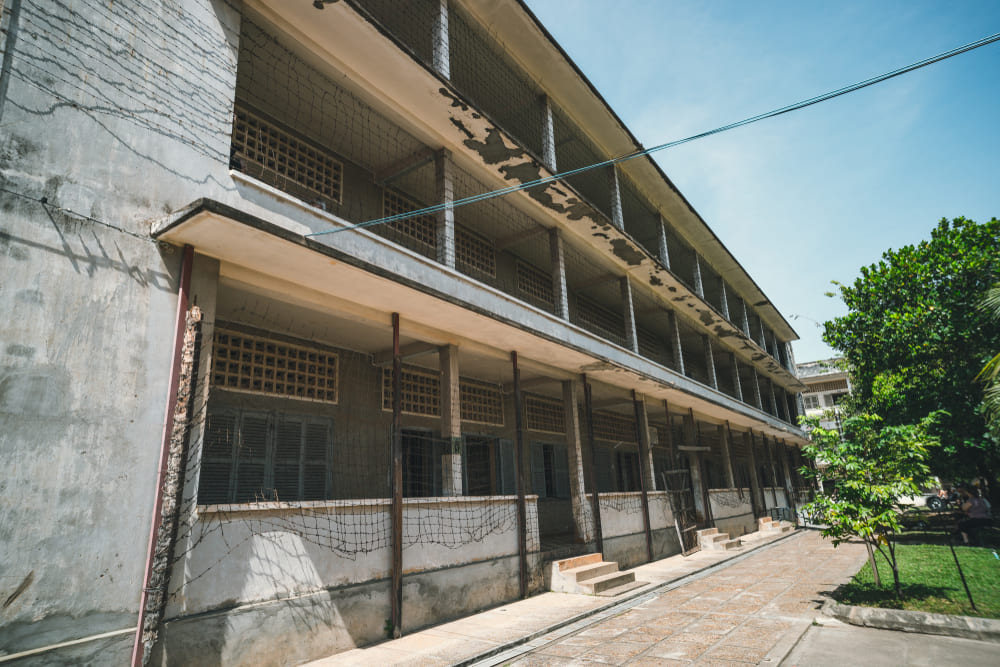
Travel back to the devastating period when Phnom Penh was under the Khmer Rouge. During that difficult time, a former school was transformed into a prison, also known as “S-21.” Over 17,000 people were incarcerated for interrogation, torture, and extermination of political enemies. Prisoners were forced to confess their “crimes,” and almost every one of them did not make it out alive.
Nowadays, the S-21 has turned into a museum that bears the brutal history of Cambodia. Visitors can walk through this historical site, where it exhibits classrooms divided into small cells with some beds and chains left on the floor. Tour guides and audio guides are available to help you navigate the historical exhibits.
Opening hours: Daily, 8:00 am to 5:00 pm
11. Learn Heartbreaking Cambodian History At The Killing Field (Choeung Ek Memorial)
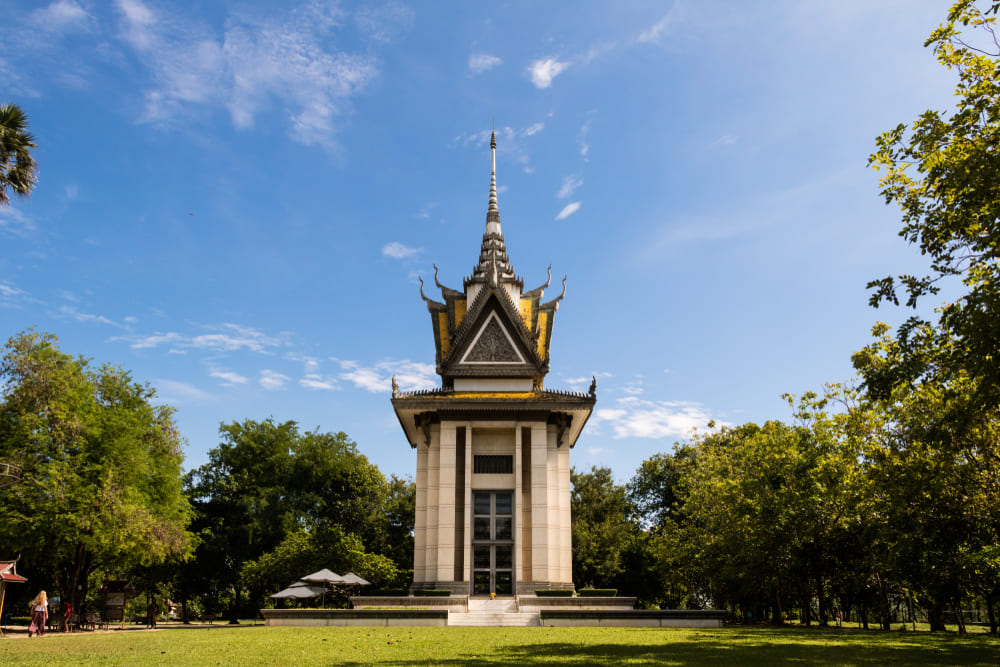
In relation to the S-21, the Killing Field in Choeung Ek is the place where over 17,000 prisoners from the S-21 were brought to death after falsely confessing their “crimes” during the Khmer Rouge from 1975 to 1979. Almost 9,000 remains of human bones and skulls were found at this mass execution, which have been collected and put together in a stupa for visitors to pay tribute to the victims.
Today, the Killing Field is known as a sentimental and memorable place for Cambodians. Travelers are encouraged to visit and learn about the Cambodian devastating history that led to many losses to the people in the country. Reflecting on past events reminds people of how far Cambodia has come and how to move forward while ensuring history is never repeated.
Tips: When you visit the Killing Field, please ensure to wear knees- and shoulders-covered attire on site.
Opening hours: Daily, 7:30 a.m. to 5:30 p.m.
12. Join A Meditation Class At Wat Langka
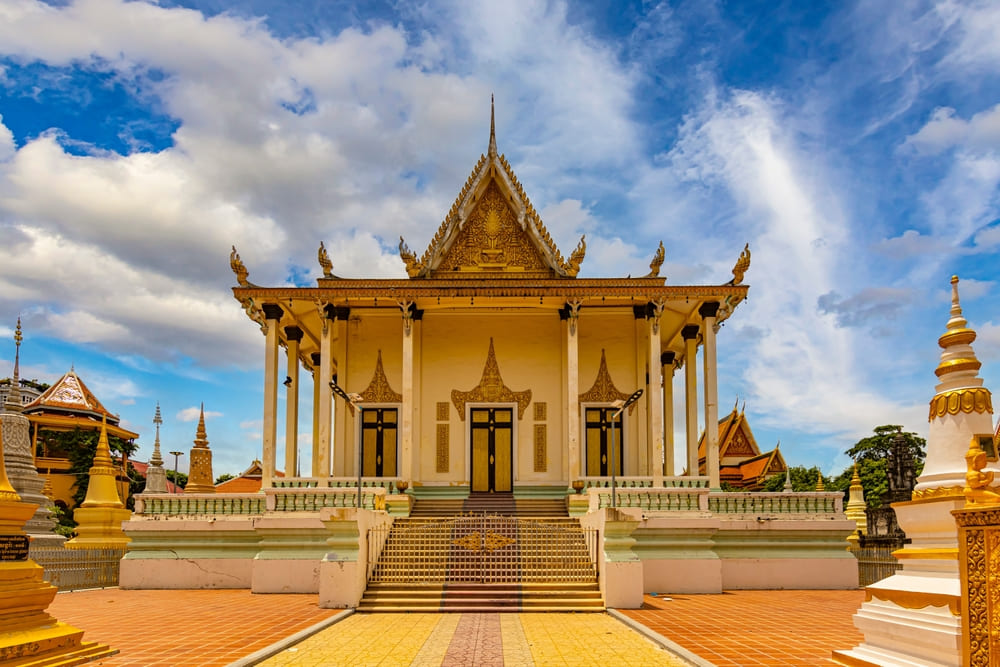
At the southwest corner of the Independence Monument, you will find a shiny, elegant pagoda called Wat Langka. This is one of the 5 ancient temples founded by King Ponhea Yat, dating back to 1442. Wat Langka expresses its life through vibrant colors, and it was used to store the Tripitaka, sacred manuscripts of Buddhism. Moreover, the temple was a meetup point among Buddhist monks from Cambodia and Sri Lanka, during the Khmer Rouge.
Immerse yourself and connect to your inner peace by joining a meditation class atWat Langka. Held every Monday, Thursday, and Saturday at 6 pm and Sunday at 8:30 am, these free classes are open to everyone, offering a wonderful opportunity to connect your mind and soul.
Opening hours: Daily, 6:00 am – 7:00 pm
13. Dive In The Phnom Penh History At Wat Ounalom

As Buddhism is the largest religion in Cambodia, Wat Ounalom is considered as the headquarters of Cambodian Buddhism. Founded in 1443, the temple went through the Khmer Rouge era and came back to life after the tragedy.
One of the remarkable temples in Cambodia, Wat Ounalom is home to 44 structures for religious practices. Just behind the grand temple, there is an ancient pagoda that secures an eyebrow hair of Buddha with 4 Buddha statues facing north, south, east, and west. The inside of the pagoda displays majestic carved wall art of Hindu gods, including Yama, Vishnu, and Garuda.
Opening hours: Daily, 6:00 am – 6:00 pm
14. Admire the Unique Shrine at Wat Kean Khleang
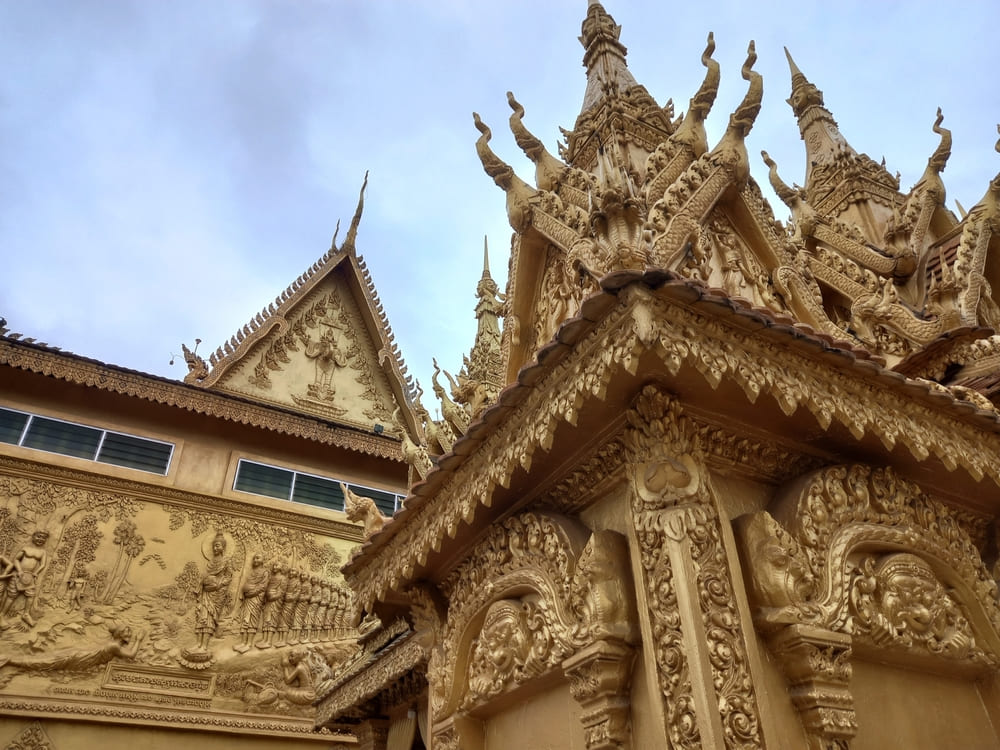
Admire the astonishing architecture of Wat Kean Khleang, also known as “The Golden Temple. Located only 15 kilometers north of Phnom Penh, Wat Kean Khleang is not too far from the city, yet it is a hidden gem for many tourists.
Unlike many other places in Phnom Penh, Wat Kean Khleang does not have ancient ruins to explore. Instead, you will be greeted by the shimmering, golden sight of the temple and pagoda structures. The interior of the main structure features murals of the life of Buddha and different gold statues.
As you continue walking along the Mekong River, you will see a unique pagoda covered in golden paint. This pagoda is not like any other because it encloses a tree that emerges through the roof. While the temple and pagoda look extravagant, please remain respectful, as the locals visit this site for religious practices and worship.
Tips: Start your trip to the temple early in the day to avoid heat and traffic congestion.
Opening hours: Daily, 8:00 am – 5:00 pm
15. Savour Local Bites At Phnom Penh Night Market
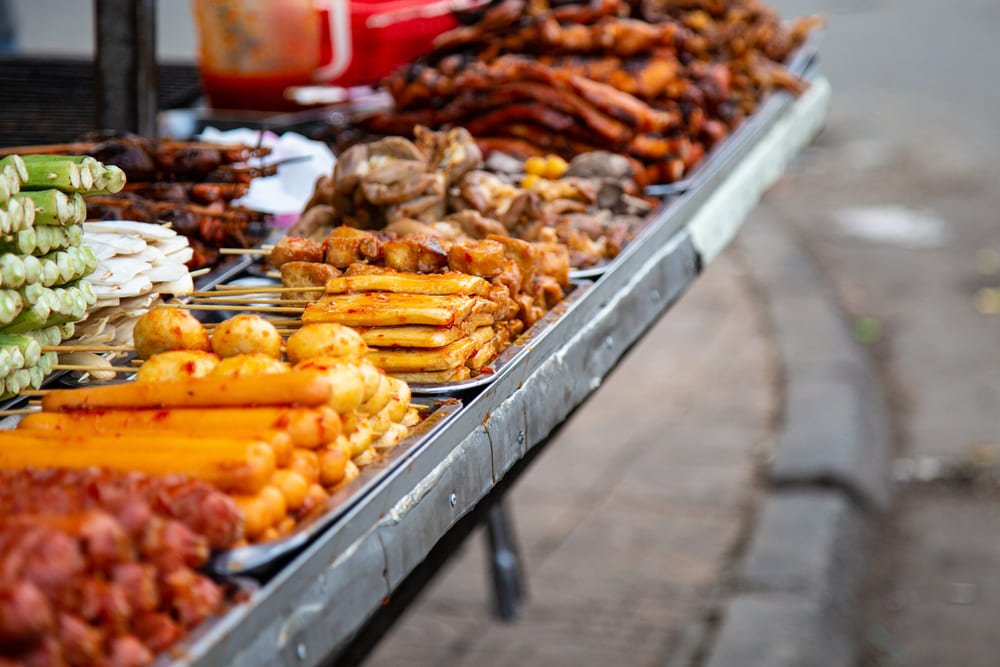
Take a stroll along the riverside and enjoy eating at the Phnom Penh Night Market. This is a popular spot among both locals and tourists due to its lively atmosphere,with live music and dance performances at many restaurants.
Savor local flavors at various food stalls, such as grilled meatballs, smokey sausages, and Cambodian-style BBQ. Don’t miss out on the crunchy “grilled pig ear skewers” paired with pickled vegetables. Another must-try is the refreshing sugarcane juice mixed with little kumquats that gives a sweet yet tangy flavor.
Finish your trip at the Phnom Penh Night Market with a last-minute shopping haul, browsing a selection of second-hand clothing, Cambodian handicrafts, artworks, silk products, handmade jewellery, and many other local goods.
Opening hours: Friday, Saturday, and Sunday 5:00 pm to 11:00 pm
Seasonal Guide: Best Times to Visit Phnom Penh
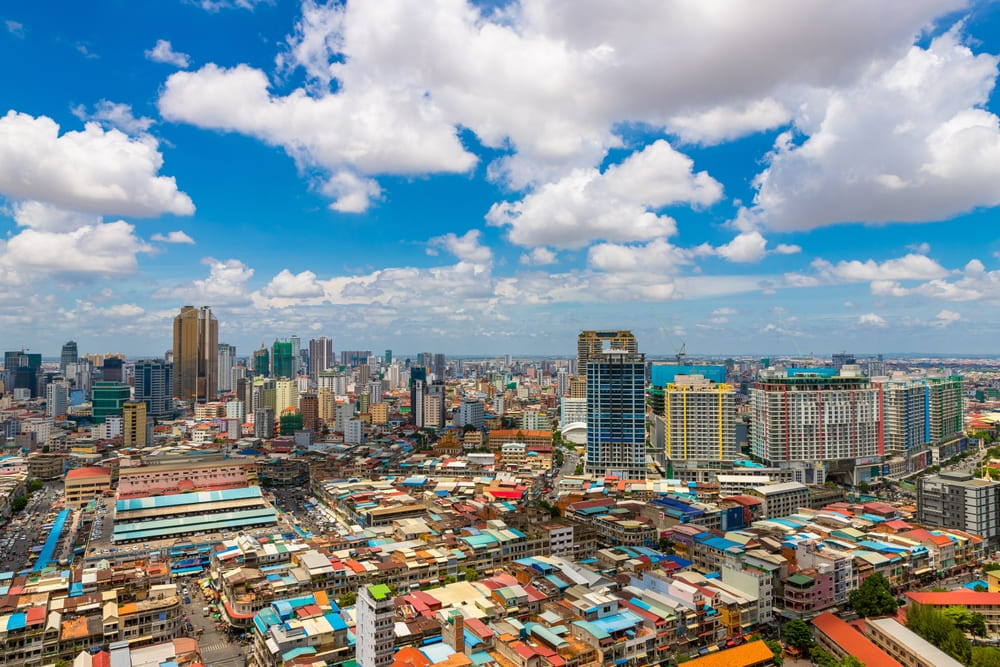
As Cambodia is a tropical country, it has two main seasons: the dry season and the wet season. We recommend visiting during the dry season to make the most of your time.
- November – February (High Season): This is the “cool season,” and the weather is dry. During this period, the average temperature hovers around 20°C or 68°F, and there is minimal chance of rain. It’s the most popular and busiest time for travelers to visit Phnom Penh!
- March – May: Still in the dry season, you can expect hot and humid weather with the temperature rising to 40°C or 104°F. Please note that March and April are the hottest months in Phnom Penh. Be prepared for the heat and stay hydrated.
- June-October (Low Season): This is the wet season with heavy rainfall and monsoons. The wettest months are July to September, with the average temperature between 25-27°C or 77-80°F. Traveling during the monsoon season might be a bit tricky, but this period also provides a beautiful “green” landscape that will leave a lasting impression.
Explore more travel in Phnom Penh, Cambodia
- Best Things to Do in Phnom Penh: Ultimate 2-3 Days Trip Guide
- Best Temples to Visit in Phnom Penh: Your Ultimate Guide
- Phnom Penh Hotels: Where to Stay in the Capital of Cambodia
Fly to the Capital of Charm: Phnom Penh with Bangkok Airways
Get ready to explore the historical sites and cultural attractions in Phnom Penh, the capital city of Cambodia. Experience the way of local life by walking through the markets, learning the culture at the temples, and admiring Cambodian architecture at iconic spots. Bangkok Airways provides convenient travel with a direct flight from Bangkok to Phnom Penh, ensuring a smooth flight without any hassles.
Bangkok Airways: Experience Unparalleled Comfort and Convenience.
Embark on seamless travel adventures with Bangkok Airways’ extensive network of flights connecting you to Singapore, Laos, Cambodia, and Hong Kong. Additionally, enjoy our domestic flights to Chiang Mai, Bangkok, Koh Samui, Sukhothai, and Trat.
- Seat Selection: Choose your preferred seat on your flight to ensure a comfortable journey.
- Baggage Allowance Included: Enjoy up to 20 kg of checked baggage, allowing you to bring along your essentials without worry.
- In-flight Meals: Savor delicious and satisfying meals on board, tailored to your taste preferences.
- Airport Lounge Access: Relax and unwind in our exclusive airport lounges before your flight.
“ Bangkok Airways, Asia’s Boutique Airline ”


